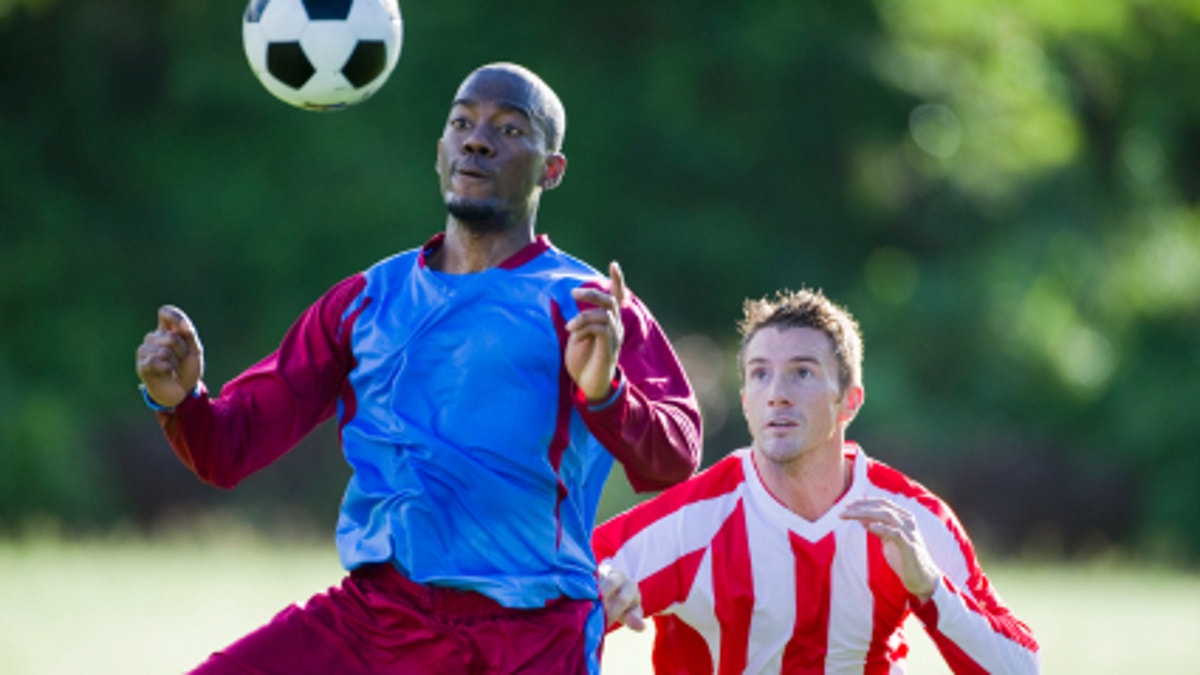
In a follow-up to a recent study that claimed heading soccer balls may cause brain damage, lead study author Dr. Michael Lipton said U.S. soccer officials were too quick to dismiss the study findings.
According to the study, soccer players who frequently headed the ball showed brain injuries similar to those seen in patients with concussions. Furthermore, researchers from New York's Albert Einstein College of Medicine and Montefiore Medical Center reported "significant injury" in those players who exceeded 1,000 to 1,500 headers per year.
The researchers identified five areas in the white matter of the brain—responsible for attention, memory and visual functions—that were affected by heading through the use of MRI scans.
Virtually all the participants were young professionals who had been playing in amateur soccer leagues since age six.
“When you meet these people, they seem pretty normal,” Lipton said. “They’re not demented. They have jobs, they function just fine. They may not even be aware there’s a problem. But many participants did have concerns or complaints about not being as sharp as they could be.”
Lipton, who is also the associate director of the Gruss Magnetic Resonance Research Center, said the injuries essentially were comparable to those seen in football players who suffered from chronic traumatic encephalopathy (CTE) due to frequent head trauma – though he said it was difficult to make too many parallels between professional football players and amateur soccer players.
In the studies of football players, he said, researchers were able to do autopsies of the brain and find accumulations of tau proteins, which are also found in Alzheimer’s patients, and believed to kill cells in the regions responsible for mood, emotion and executive functioning. The proteins are undetectable in brain imaging of living people.
However, Lipton said, “the brain injury that’s causing CTE in football players at root is the same thing here that we see in soccer players. That’s not to say the severity is same or it’s the same injury, but the basic mechanism is the same.”
Jim Cosgrove, executive director of US Youth Soccer, told FoxNews.com that he had “some concerns” with the study based on variability and number of participants.
"The main concern we have is the data isn't quite specific enough in regards to heading as the cause of concussions," Cosgrove said. "Other impacts could create the damage."
Lipton said the study addressed those concerns with an epidemiological questionnaire that asked participants how many times they suffered other potentially concussive injuries throughout the year – whether it was getting accidentally kneed in the head by another player or an event completely unrelated to soccer, like car accidents.
“When we factored in history of concussions from other injuries as a variable, it did not change the result,” Lipton said. “We are confident that the white matter damage we saw came from heading.”
In fact, Lipton said they found that players who did the least amount of heading often suffered more unrelated concussive injuries – about six times as much as players who did the most heading. However, these players still showed less damage to the brain than players who did more heading and suffered less unrelated concussive injuries.
There was no difference in injury between different soccer positions, which Lipton said was “surprising,” considering some players – like goalies – may be at greater risk of suffering blows to the head while blocking the ball.
Lipton agreed with officials from the U.S. Soccer Federation and US Youth Soccer that wearing head gear during games would likely do little to protect players from white matter damage. Soccer officials said they didn’t recommend head gear to prevent injury because the helmets could give players a feeling of invincibility and actually lead to more impacts. Lipton said his concern was a bit different.
“The injury we’re talking about here is not due to a localized impact on the head from the ball,” Lipton said. “We’re not talking about skull fractures or subdural bruising.”
He clarified that it was the movement of the head – not the impact of the ball – that caused trauma to the white matter of the brain.
“This injury is deep inside, due to acceleration and deceleration of the brain – essentially the brain is sloshing around in the skull,” Lipton said. “It’s about the player willfully moving their head to a projectile. This isn’t going to be fixed by distributing the load or absorbing some of the force, like a helmet would do.”
Other recommendations from U.S. soccer officials, such as delaying heading until age 10 or practicing proper heading techniques, may also not be enough to prevent injury, Lipton said.
“Using proper heading techniques is a nice idea but if you take a few minutes and pull up videos of soccer matches on Google, perfect technique is rare,” Lipton said. “It’s very common that players, when using the head as bat to play the ball, they twist their heads to get it into the net, which is causing the damage.”
Also, he added, there’s no scientific basis for the idea that certain heading techniques are safer than others. The main take-away from the study is that there is a certain threshold of the amount of times a player can head the ball and not suffer from lasting injuries.
“The general opinion is heading in soccer—everyone does it, so it couldn’t be problem,” Lipton said. “I don’t see how you could use that as evidence. There used to be time when people thought concussions in football or repeated blows to head in boxing were not a big deal. This should spur further research.”
